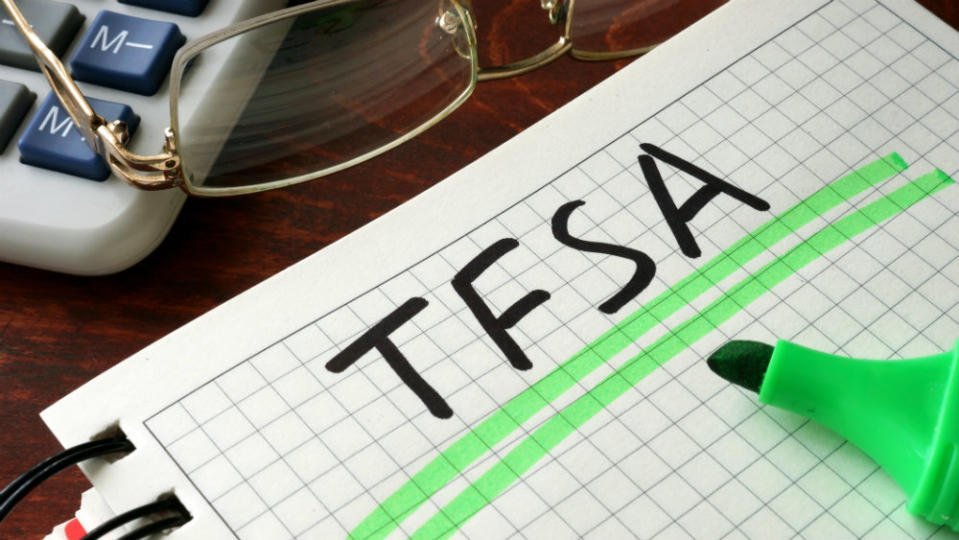Here’s the Average TFSA Balance in 2024

Written by Aditya Raghunath at The Motley Fool Canada
The Tax-Free Savings Account (TFSA) is a popular registered account in Canada. According to a Bank of Montreal report, 62% of Canadians have a TFSA. The TFSA was introduced in 2009, and its tax-advantaged status allows individuals and households to grow their wealth over time while gaining exposure to a variety of asset classes.
However, BMO’s annual investment survey revealed that TFSA usage declined in 2023 as challenging economic conditions negatively impacted the finances of Canadians. For instance, TFSA usage in 2023 fell to 62% in 2023, down from 66% in 2022 and 69% in 2018.
According to the report, basic monthly expenses rose by $397 year over year in 2023, due to which over 50% of Canadians are spending less on discretionary items such as eating out, travel, and shopping. Around a quarter of the Canadians surveyed also said they would avoid investing in 2024 and would focus on paying off debt.
The average TFSA balance is $41,510
While rising costs and higher interest rates weigh heavily on household income, Canadians should prioritize investing to benefit from the power of compounding. Additionally, the TFSA offers the flexibility to withdraw funds anytime without paying a single penny in taxes to the Canada Revenue Agency. This flexibility suggests the TFSA should be an investment vehicle of choice for most investors.
The maximum cumulative TFSA contribution room rose to $95,000 in 2024. However, not every Canadian is eligible to contribute this amount. For instance, a 21-year-old will be eligible to contribute less than $30,000, as money can be allocated to the TFSA only after the age of 18.
BMO’s report states that TFSA balances at the end of 2023 rose by 9% to $41,510. The total TFSA amount Canadians have in their TFSA has risen over the last six years. If we assume the TFSA balances rise by a modest 5%, the average amount in this account should be around $43,580 in 2024.
Create a diversified TFSA portfolio
The tax-advantaged status of the TFSA indicates you need to put your savings to use and focus on creating game-changing wealth over time. If you have $40,000 in your TFSA and contribute $7,000 each year to this account and earn a return of 8% annually, your portfolio should grow to over $1 million in 28 years.
Canadians can consider holding various asset classes, including stocks, bonds, exchange-traded funds, and mutual funds, in a TFSA, which results in diversification and lowers portfolio risk.
You can allocate money towards instruments such as Guaranteed Investment Certificates (GICs), gold ETFs, dividend-growth stocks, and low-cost passive-income funds, all of which are positioned to outpace inflation in the upcoming decade.
Investors can consider allocating a portion of their TFSA contributions towards dividend-growth stocks such as Restaurant Brands International (TSX:QSR), which went public in late 2014. A $7,000 investment in QSR soon after its IPO (initial public offering) would help you buy 143 company shares and earn $80 in annual dividends in 2015, indicating a forward yield of 1.14%.
Over the years, QSR’s dividend payout has risen significantly, and 143 shares today will help you earn more than $450 in annual dividends, increasing the yield at cost to more than 6.4%. Additionally, QSR stock has more than doubled since its IPO, resulting in capital gains, too.
The post Here’s the Average TFSA Balance in 2024 appeared first on The Motley Fool Canada.
Should you invest $1,000 in Bank of Montreal right now?
Before you buy stock in Bank of Montreal, consider this:
The Motley Fool Stock Advisor Canada analyst team just identified what they believe are the 10 best stocks for investors to buy now… and Bank of Montreal wasn’t one of them. The 10 stocks that made the cut could potentially produce monster returns in the coming years.
Consider MercadoLibre, which we first recommended on January 8, 2014 ... if you invested $1,000 in the “eBay of Latin America” at the time of our recommendation, you’d have $15,578.55!*
Stock Advisor Canada provides investors with an easy-to-follow blueprint for success, including guidance on building a portfolio, regular updates from analysts, and two new stock picks each month – one from Canada and one from the U.S. The Stock Advisor Canada service has outperformed the return of S&P/TSX Composite Index by 32 percentage points since 2013*.
See the 10 stocks * Returns as of 3/20/24
More reading
Can You Guess the 10 Most Popular Canadian Stocks? (If You Own Them, You Might Be Losing Out.)
How to Build a Bulletproof Monthly Passive-Income Portfolio in 2024 With Just $25,000
Fool contributor Aditya Raghunath has no position in any of the stocks mentioned. The Motley Fool recommends Restaurant Brands International. The Motley Fool has a disclosure policy.
2024

 Yahoo Finance
Yahoo Finance 